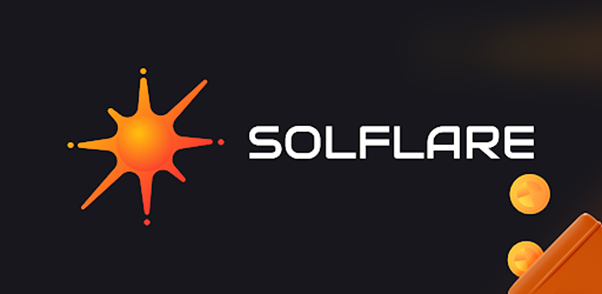Okay, so check this out—I’ve been messing around with a bunch of Solana wallets lately, and honestly, something about Solflare just clicks. You know that feeling when you try a wallet, and it’s either clunky or missing key features? Yeah, I’ve been there. But with Solflare, there’s this smoothness that’s kinda rare. Wow!
At first glance, Solflare looks like any other wallet. But dig a bit deeper, and it supports Ledger hardware wallets seamlessly, which is huge for anyone serious about security. Seriously? Yeah, because not all Solana wallets play nice with Ledger, even though hardware wallets are the go-to for keeping crypto safe. You’re basically getting the best of both worlds—cutting-edge Solana DeFi access with the peace of mind that your private keys aren’t floating around online.
Now, I gotta admit, I was skeptical about how well a mobile Solana wallet could handle advanced features. Mobile wallets often feel stripped down, right? But Solflare’s mobile app surprised me. It’s not just a wallet; it’s a gateway to Solana’s expanding DeFi ecosystem. You can stake, swap tokens, and interact with dApps without hopping between apps. Something felt off about most mobile wallets before, like they were missing the “pro” stuff. Solflare doesn’t—at least not in my experience.
On one hand, the user interface is clean and approachable, making it perfect for newcomers. Though actually, if you’re a seasoned DeFi user, the advanced features are there too, but they don’t overwhelm the casual user. Initially, I thought that meant compromises somewhere, but nope—balance seems to be their game.
Here’s the thing. Ledger integration is very very important for Solana folks who want that extra layer of security without sacrificing convenience. Many wallets tout Ledger support but end up with buggy or partial implementations. I spent a couple of days testing Solflare with my Ledger Nano X, and the connection was rock solid. No weird disconnects or glitches, which can be a nightmare especially when dealing with DeFi transactions that time out or fail easily.

Why Ledger Support Makes Solflare a Game-Changer
Alright, I’m biased, but I gotta say: Ledger hardware wallets are the gold standard for security right now. If you’re juggling a decent stash of SOL or other tokens on Solana, trusting a software-only wallet feels risky. I mean, hacks happen, phishing scams are everywhere, and once your keys are compromised, good luck getting your funds back.
Solflare’s official site (you can see it here: solflare wallet official site) highlights their commitment to Ledger support, but what’s impressive is how seamlessly it’s integrated. You don’t have to jump through hoops or fiddle with command lines. The wallet walks you through the process intuitively. That’s rare for Solana wallets.
Hmm… I remember when I first tried to connect my Ledger with other Solana wallets—it was frustrating, like the device wasn’t being recognized or the app just froze. With Solflare, that frustration was gone. Plus, when you’re dealing with staking or swapping tokens on Serum or Raydium, you want that hardware confirmation step to feel quick and reliable.
Something else that bugs me about some wallets is how slow the syncing can be, but Solflare manages to stay responsive even with Ledger enabled. If you care about timing your DeFi moves or catching those yield farming opportunities, delays can cost you real money.
Solflare’s Mobile Wallet: More Than Just Convenience
Look, mobile wallets often get dismissed by hardcore crypto users because they’re seen as less secure or feature-limited. But Solflare’s mobile app actually bucks that trend. It offers a full suite of DeFi tools, including token swaps, staking, and portfolio tracking. I’m not 100% sure they cover every niche dApp out there, but for most folks, it’s surprisingly comprehensive.
One thing that caught my eye was the wallet’s built-in support for NFTs on Solana. (Oh, and by the way, if you’re into digital collectibles, the wallet makes browsing and managing your Solana NFTs pretty painless.) I wasn’t expecting to see that level of polish on mobile.
What’s cool is that the wallet syncs with Ledger even on mobile, which is not a small feat. You can be out and about, confident your keys are offline, yet still interact with your DeFi positions or check your balances instantly. That’s something I haven’t seen done this well elsewhere.
Okay, so check this out—using Solflare on mobile made me rethink what a mobile Solana wallet can do. It’s not just a “nice-to-have” anymore; it’s becoming a central hub for managing your crypto assets securely and smartly. The fact that it’s built with Ledger users in mind speaks volumes about their target audience—folks who want convenience *and* security.
Some Quirks and What Could Improve
Now, I’ll be honest, Solflare isn’t perfect. Sometimes the transaction fees estimate feels a little off, especially when the network gets busy. Also, there were moments when the UI lagged just a tad on my older phone model. Nothing catastrophic, but enough to notice if you’re nitpicking.
Also, the wallet’s DeFi integrations are solid but not exhaustive. If you’re hunting for every single new Solana protocol launch, you might find the wallet a bit behind the bleeding edge. Though actually, that’s not necessarily a bad thing—sometimes being a bit conservative with integrations means fewer bugs and more stability.
Here’s what bugs me about some wallets: they try to do everything and end up doing nothing well. Solflare, in contrast, feels focused. They concentrate on nailing Ledger support and core DeFi tools first, which is a smart strategy.
Another tiny quirk: sometimes the terminology can trip up beginners. For example, “stake accounts” versus “delegations” might confuse users who are new to Solana’s staking model. But hey, that’s partly on the ecosystem itself—Solana’s staking concepts aren’t the simplest.
Final Thoughts: Why I Keep Coming Back to Solflare
Honestly, I wasn’t expecting to get this attached to a Solana wallet, but here we are. My instinct said a simple mobile wallet with Ledger support was a pipe dream, but Solflare proved me wrong. It’s a rare mix of security, usability, and solid DeFi features that actually work like they should.
So if you’re diving into Solana DeFi, especially if security matters to you (and it should), I’d say give Solflare a serious look. The solflare wallet official site is where you’ll find the latest updates and installs. I’m pretty sure you’ll appreciate the smooth Ledger integration as much as I do.
Wow! It’s refreshing to see a wallet that doesn’t overpromise but delivers solidly on what counts. I’m curious to see how they evolve, especially as Solana’s ecosystem grows crazier fast.
Frequently Asked Questions
Does Solflare support Ledger on both desktop and mobile?
Yes, Solflare integrates Ledger hardware wallets on desktop browsers and also supports Ledger connection through its mobile app, providing consistent security across platforms.
Can I stake SOL directly from Solflare?
Absolutely. Solflare lets you stake SOL easily, including managing multiple stake accounts and delegations, all while keeping your keys secure via Ledger if you prefer.
Is Solflare safe for managing NFTs on Solana?
Yes, Solflare supports viewing, sending, and receiving Solana NFTs within its wallet interface, with Ledger integration adding an extra layer of security for transactions.
